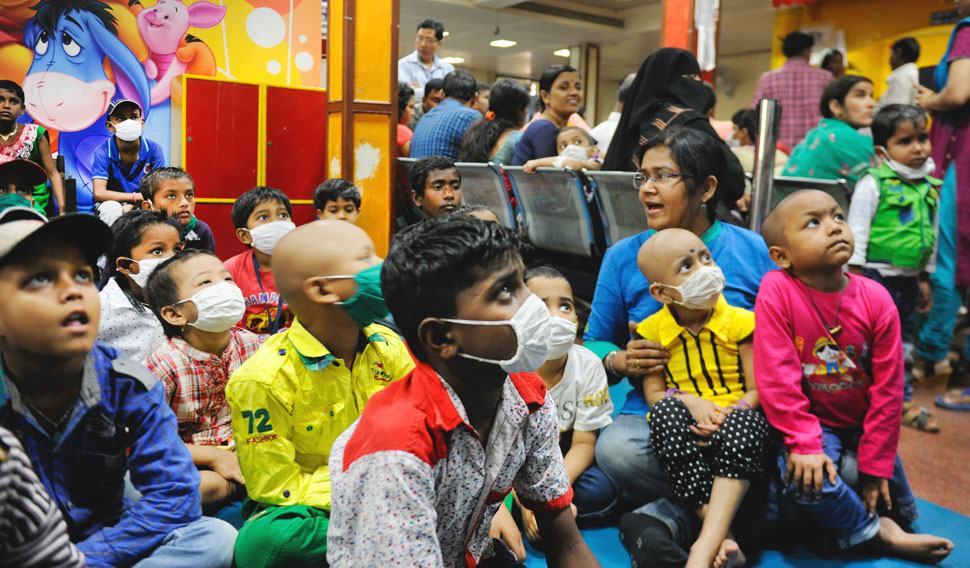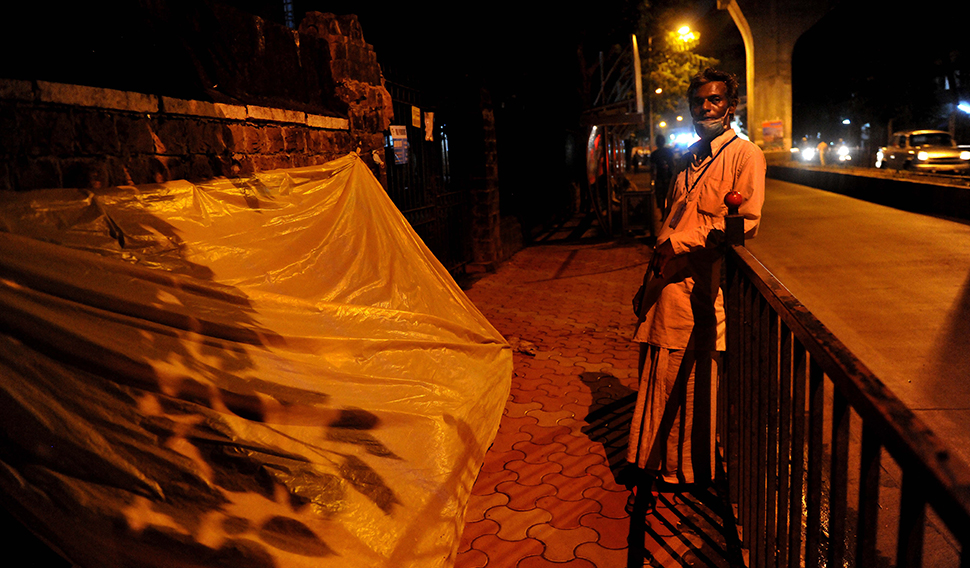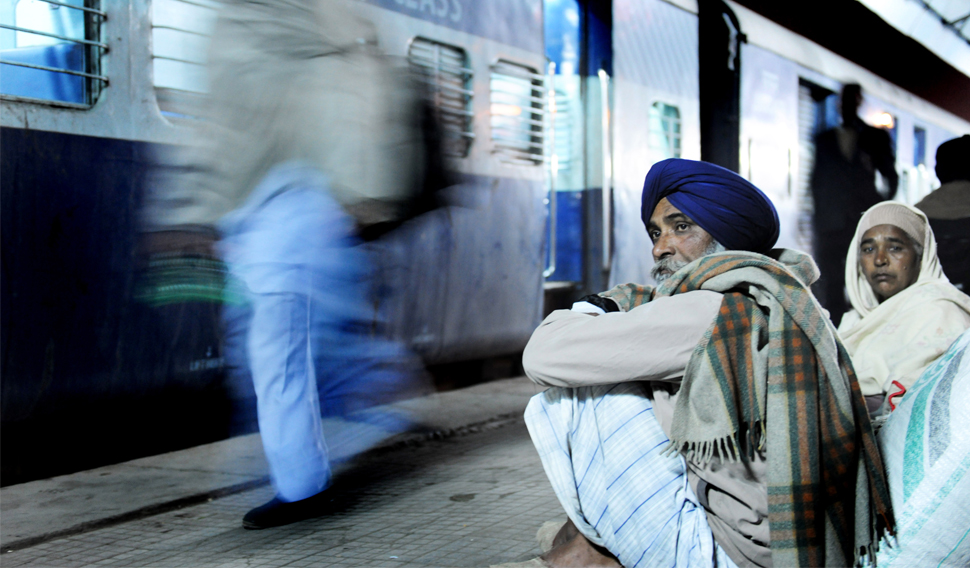
PAEDIATRIC ONCOLOGY
Young and thriving

Gunjan Sharma
February 03, 2016

Paediatric cancers are amenable to treatment with high cure rates
Navdeep Kaur is chirpy, her eyes bright as she watches a movie on her tablet during the last cycle of chemotherapy at BLK Hospital in Delhi. So contagious is her cheerfulness that her grandmother Gurmail Kaur, who is sitting beside her, is hardly nervous.
Her only concern is that the ten-year-old refuses all food except mango juice and chocolate milk shake. “Her taste buds have gone for a toss due to aggressive treatment. Doctors say it is temporary. They are confident of her recovery,” she says, caressing her granddaughter’s hand.
Fortunately, Navdeep’s doctor in her village near Jalandhar, Punjab, didn’t take long to spot her illness. “She came back from school one day and complained of tiredness. We let her sleep the whole day and night. In the morning she complained of pain in her thighs. We took her to a doctor who asked us to take her to Delhi immediately. Here, she was diagnosed with acute myeloid leukaemia and the doctor immediately put her on chemotherapy. For four months, we have been living in Delhi for her treatment,” says Gurmail.
Doctors are confident that Navdeep would be cured of the cancer and will lead a normal life. “If we detect cancer in time, especially in children, and treat it aggressively, it can be cured. There are very less chances of relapse. And if it does, it can be cured again,” says Dr Gaurav Kharya, paediatric hemato-oncologist, BLK.
In the 1960s, cancer was like a sure death sentence. The survival rate was hardly five per cent. Things changed after Tyrosine Kinase Inhibitor, a targeted drug for cancer, came into the market 40 years ago.
It was not always like that. In the 1960s, cancer was like a sure death sentence. The survival rate was hardly five per cent. Things changed after Tyrosine Kinase Inhibitor, a targeted drug for cancer, came into the market 30 years ago. "At that time survival rate of Chronic Myeloid Leukemia was less than 10 per cent. But with the help of this medicine we are able to save 80 per cent of the affected children. It targets the mutation that causes this cancer," says Kharya. "In certain types of cancers, survival rate has gone up to 95-99 per cent in 2015. It is a remarkable feat."
Blood cancers are common in children. Apart from chemotherapy, doctors use bone marrow transplants in some cases. Four-year-old Deep Vardhan is the only child of his parents. He was diagnosed with acute lymphoblastic leukaemia [a type of blood cancer] at age two. His condition improved during treatment, but he relapsed before it was completed. Thereafter he didn't respond to even an intensified chemotherapy. Says Dr. Ruchira Misra, paediatric oncologist at Fortis Memorial Research Institute, Gurgaon, "Acute lymphoblastic leukaemia in a two-year-old is generally treatable with chemotherapy alone but if the disease relapses then the chances of cure are very little."
In such cases, bone marrow transplant (BMT) is an option but Deep did not have a matched sibling donor. Looking for an unrelated donor was not an option either as the family could not afford such expensive therapy. So Dr. S.P. Yadav, head of the paediatric haemato-oncology & bone marrow transplant unit, FMRI, designed a two-stage treatment for Deep—in the first stage, leukaemia was to be controlled using medicines followed by a haploidentical (half-matched) bone marrow transplantation where his father would be the donor. Haploidentical transplantation is a complicated procedure and is available only at a few centres in India.
BMT involves destroying the patient's blood/ bone marrow cells before infusing the donor's normal cells, which will then grow and form the new normal blood cells. A good HLA matching means fewer complications.
Deep didn't show any major complication and was discharged after three weeks of the transplant. Six months on, he is living a normal, cancer-free life. Bone marrow or stem cell transplant is generally not offered as upfront therapy for children except for a few diseases and is generally reserved for refractory or relapse settings. BMT may be autologous (from the patient himself), allogenic, from an HLA-matched donor or haploidentical (from a parent or other family members). Cord blood transplantation uses the stem cells present in the cord blood after the delivery of the baby and may serve as both an autologous or allogenic source.
Paediatric cancers are very amenable to treatment and have good cure rates. Cancers like retinoblastoma and Hodgkin’s lymphoma have cure rates as high as 90-95 per cent. Survival rate is higher if the diseases are detected and treated at an early stage. Newer chemotherapy agents are also improving cure rates. Drugs like rituximab are helpful in some lymphomas and imatinib is almost like a wonder drug for chronic myeloid leukaemia. "What has also improved is the supportive care that is being offered to the patients today. We have access to better antibiotics, anti-viral and anti-fungal medicines; access to intensive care and good blood banks, all of which contribute to the overall improved survival rates for paediatric cancers," says Misra.
Doctors feel that sub specialists—paediatric surgeons and paediatric oncologists—who treat only childhood cancers have an edge over specialists who treat adults. Dr. Prashant Jain, paediatric surgeon at BLK Hospital, gave an example of a four-month-old baby with a 10-cm tumour in his kidney (the size of the kidney is hardly 4cm in infants). Luckily, the location of the tumour allowed for removal through open surgery. The baby was then given chemotherapy. "If the tumour location is complex, we prefer to give chemotherapy first to reduce its size. It makes it easier and safer for us to surgically remove it," says Jain.
Hi-tech imaging techniques help doctors stage a tumour. Staging helps doctors in deciding the extent and duration of chemotherapy. Says Jain, "We also do genetic analysis of the tumour before we decide on chemotherapy or radiation."
Q&A with Dr. Jame Abraham

Dr. Abraham is the director of the Breast Oncology Program at the Taussig Cancer Institute, US
What screening options are available for cervical cancer?
Development and widespread use of pap smear is one of the most important success stories in cancer detection and prevention.
For more, click here

